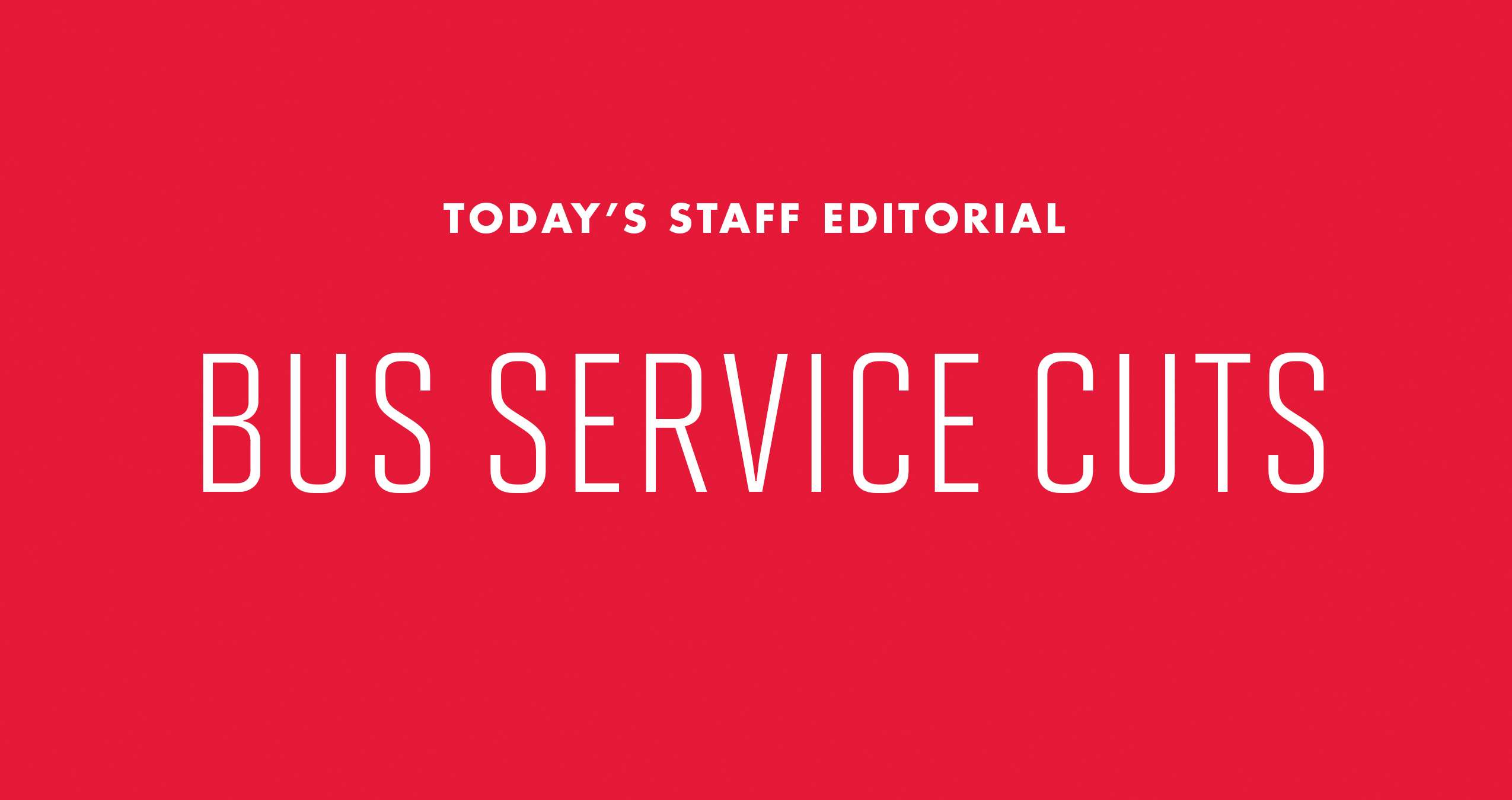On Wednesday, the University of Maryland DOTS announced a deluge of service reductions and cuts to bus routes to make up, at minimum, a $700,000 budget deficit. For a campus already stingy with parking spaces and fairly unkind to its commuters, this decision hurts. Many people have already spoken up about what a blow these losses of accessibility and campus connectivity are to the value of this university.
[Read more: DOTS announces bus service cuts to make up for budget shortages]
In response to community concerns, Department of Transportation Services Executive Director David Allen said, “There’s no situation where someone would want to cut bus routes … but when faced with this situation, you have to make the best decision you can make.” The fact DOTS believes this is the best decision to make shows where its priorities are.
The problem stems largely from all the vanity construction projects tearing up this campus the past few years. Not only do they block student access where work is being done, they’ve also resulted in the loss of thousands of parking spaces and will continue to demolish more.
[Read more: University of Maryland will decrease parking spaces and increase fees by fall 2018]
The construction of Cole Field House alone will cut more than 250 spaces next semester. As the university is set to invest $155 million in just the first stage of the project — more than it spends on all scholarships and fellowships for its students — it’s taken space from those students to give football players another practice field. This meant DOTS couldn’t sell as many parking permits, thus widening its budget deficit to the point it couldn’t provide the services for which students pay increasingly high fees.
It was poor planning by the university administration that led to the community having to deal with these burdens. We may have elegant glass buildings directing eyes to our athletics department, but students now struggle with basic mobility across College Park. Even as this university boasts proximity to Washington, D.C., it cuts weekend service for the #104 bus to the College Park Metro, leaving students to figure out how to get there themselves. We’re paying for services we’re not getting, then we’re expected to pay more to access alternative transportation.
This editorial board wants to see this university do better. Shortsighted planning cannot continue to create more barriers for students. DOTS exists because transportation problems on this campus are outside the domain of the administration, so when the administration drains the department’s resources to benefit other projects, it shows a lack of commitment to maintaining an accessible campus.
With these decisions, this university isn’t creating a campus to serve its students. That can’t continue. Students shouldn’t have to bear massive inconvenience because we’ll have a world-class, glass-dominated, STEM-serving campus in 10 or 20 years.
This university needs more parking spaces, DOTS needs more funding and students need more support. These bus service cuts show that no one in that hierarchy is getting what they need, and that won’t change until the university administration recognizes its mistakes.



